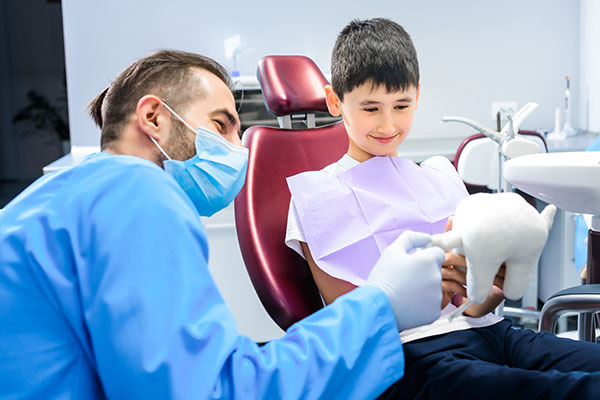What to Expect on Your First Visit to the Cosmetic Dentist
 Like the first visit with a family or general dentist, the first visit with a cosmetic dentist is more of a get-to-know-you session. Cosmetic dentistry uses advanced and sometimes complex procedures to transform patients’ smiles. Because such procedures help to restore function and improve the teeth's overall appearance, there is a lot at stake for patients. It is imperative that patients are both comfortable in the care of a cosmetic dentist and confident in the professional’s abilities.
Like the first visit with a family or general dentist, the first visit with a cosmetic dentist is more of a get-to-know-you session. Cosmetic dentistry uses advanced and sometimes complex procedures to transform patients’ smiles. Because such procedures help to restore function and improve the teeth's overall appearance, there is a lot at stake for patients. It is imperative that patients are both comfortable in the care of a cosmetic dentist and confident in the professional’s abilities.
Laying the foundation: The first appointment with a cosmetic dentist
The first visit with a cosmetic dentist begins like that of a visit to a general dentist. It differs, however, in that instead of jumping right into the examination, the professional often first sits down with the patient to discuss goals for treatment. A provider needs to understand why a patient desires cosmetic dentistry, as the reasons differ for everyone. While improving aesthetics is a top priority for many individuals, many more want to increase function or prevent further tooth loss or damage.
After hearing about a patient’s goals for treatment, the dentist moves on with the exam portion of the appointment. A cosmetic dentist needs to gain a clear picture of a person’s overall oral health situation as it may be necessary to correct certain issues before treatment can begin. Additionally, certain characteristics may interfere with treatment and necessitate a different course of action. This part of the first visit may include the following:
- X-rays or imaging to assess the underlying tooth structure
- An oral cancer exam
- Examination of the patient’s bite
- A check for signs of decay, caries, or damage
- A head and neck examination
A dentist may also check to see if a patient needs additional restorations or fluoride treatment.
After the exam: Exploring patients’ options
The patient and dentist generally use the rest of the appointment to review the results from the exam and discuss the patient’s options. To establish more realistic expectations, the dentist may use a computer model and before and after photos to show the patient how the smile may change after treatment. If an individual is interested in tooth whitening, veneers, implants, or crowns, the dentist may bring up size and color options. In many cases, the dental team needs to take impressions of both the upper and lower teeth to gain a tangible idea of the patient’s existing smile.
Ending the appointment
Before ending the initial consultation, the team typically schedules follow-up appointments with the patient. If the patient decides to proceed with treatment, the front-office staff may also request access to prior dental records as well as options for payment and financing.
Conclusion
The first visit with a cosmetic dentist lays the foundation for the patient-doctor relationship. To make the most of it, prospective patients should have an idea of what they want and what to expect and prepare themselves to actively participate in the consultation.
Request an appointment or call About Dental Care at 435-652-9105 for an appointment in our St. George office.
Recent Posts
A cosmetic dentist can give you a bright, healthy smile. This provider can perform procedures that improve the appearance of your teeth and gums. Knowing the cosmetic dental treatments can help you make informed decisions about your next appointment. Here are the details about the common procedures your cosmetic dentist can provide.People with chipped or…
Are you considering a cosmetic dentistry procedure? Read on to learn what questions you should ask during your consultation. Before you begin your cosmetic dentistry treatment plan, there are certain questions to ask the dental team to ensure you are able to prepare properly and know what to expect each step of the way. This…
Cosmetic dental services can help restore the aesthetics of damaged teeth. Tooth decay is the number one reason that people seek the services of a dentist. Decay is caused by acids made by oral bacteria destroying teeth structures.The decay starts with the most affected part of the tooth being demineralized. Then, small holes called cavities…


